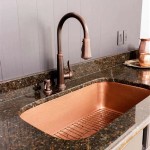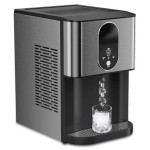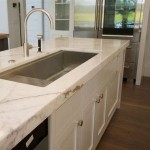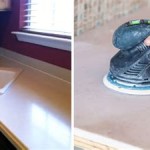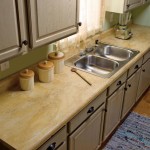Quartz Countertops: The Allure of Copper Veins
Quartz countertops have become a mainstay in modern kitchens and bathrooms, prized for their durability, low maintenance requirements, and aesthetic versatility. While classic designs like solid whites and greys remain popular, increasingly, homeowners are seeking countertops with unique visual interest. Among the most striking options is quartz featuring copper veins, which adds a touch of warmth, sophistication, and a distinct character to any space.
The integration of copper veins into quartz countertops represents a marriage of modern engineering and natural beauty. These veins, artfully created during the manufacturing process, mimic the intricate patterns found in natural stones like marble and granite, while offering the superior performance characteristics of engineered quartz.
This article delves into the specifics of quartz countertops with copper veins, exploring their manufacturing process, design considerations, benefits, potential drawbacks, and maintenance requirements. By understanding these aspects, homeowners can make informed decisions about whether this unique countertop style aligns with their aesthetic vision and functional needs.
The Manufacturing Process: Achieving the Copper Vein Effect
Creating quartz countertops with copper veins is a complex process that requires precision and expertise. Unlike natural stone, which is quarried directly from the earth, quartz countertops are engineered materials composed primarily of ground natural quartz, mixed with resins, polymers, and pigments.
The precise composition can vary depending on the manufacturer, but typically, quartz comprises approximately 90-95% of the material by weight. The remaining percentage consists of binding agents and additives that provide color, texture, and enhanced resistance to stains and scratches.
The copper vein effect is achieved through a multi-stage manufacturing process. First, the ground quartz is mixed with the resin and a base color pigment. This mixture is then poured into a mold of the desired countertop size and shape. The veins themselves are not made of pure copper. Instead, they are created using pigments and sometimes fine particles of other materials (such as glass or other minerals) that mimic the color and shimmer of copper.
These carefully selected pigments and materials are introduced into the mold in a controlled manner, often using sophisticated dispensing systems. The application process aims to replicate the natural variations and imperfections found in real veins, ensuring a realistic and aesthetically pleasing result. The arrangement of the veins can vary significantly, from subtle, hairline cracks to bold, sweeping patterns.
Once the veins are in place, the entire mold undergoes a vacuum and compression process. This removes any trapped air and compacts the mixture, resulting in a dense, non-porous slab. The slab is then cured, often using a combination of heat and pressure, to harden the resin and create a strong, durable surface.
The final step involves polishing the surface to achieve the desired sheen. This process not only enhances the aesthetic appeal of the countertop but also further seals the surface, making it less susceptible to staining and bacterial growth.
The artistry and skill involved in creating these countertops are significant. The manufacturer's ability to control the placement, density, and color variations of the veins directly impacts the overall look and feel of the finished product. This is why there can be substantial price differences between different brands and styles of quartz countertops with copper veins.
Design Considerations: Integrating Copper Veins into Your Space
Quartz countertops with copper veins can be a stunning focal point in any kitchen or bathroom. However, successful integration into the overall design requires careful consideration of several factors.
Color Palette:
The warmth of copper pairs exceptionally well with a range of color palettes. In neutral kitchens, copper veins can add a touch of visual interest and prevent the space from feeling sterile. They also complement warm, earthy tones like creams, beiges, and light browns. For bolder designs, copper can be paired with deep blues, greens, or even black for a more dramatic effect.Cabinetry:
The style and color of the cabinetry should also be considered. White or light-colored cabinets will provide a clean backdrop that allows the copper veins to stand out. Darker cabinets can create a more luxurious and sophisticated feel. Wood cabinets, particularly those with warm undertones, can create a harmonious and inviting space.Fixtures and Hardware:
Choosing fixtures and hardware with copper or bronze finishes can further enhance the overall design. Faucets, cabinet pulls, and light fixtures in these tones will tie the look together and create a cohesive aesthetic. Stainless steel fixtures can also work well, providing a modern contrast to the warmth of the copper veins.Lighting:
Proper lighting is crucial to showcasing the beauty of quartz countertops with copper veins. Natural light is ideal, but artificial lighting can also be used effectively. Under-cabinet lighting can highlight the countertop's texture and color, while pendant lights can add a touch of drama. It is essential to consider the color temperature of the lighting, as warm lighting can enhance the copper tones, while cool lighting can make them appear more muted.Backsplash:
The backsplash provides an opportunity to complement or contrast with the countertop. A simple, solid-colored backsplash can allow the countertop to be the star of the show. Alternatively, a backsplash with subtle patterns or textures can add visual interest without overwhelming the space. Glass tiles, ceramic tiles, or even natural stone can all be effective choices.Overall Style:
Quartz countertops with copper veins can work well in a variety of design styles, from modern and contemporary to traditional and rustic. The key is to choose a design that complements the overall aesthetic of the space. For example, a sleek, minimalist kitchen might benefit from a countertop with subtle, hairline veins, while a more traditional kitchen might be better suited to a countertop with bolder, more dramatic veins.Ultimately, the best approach is to consider the overall design goals and personal preferences. Consulting with a kitchen or bathroom designer can be helpful in creating a cohesive and visually appealing space.
Benefits and Drawbacks of Quartz Countertops with Copper Veins
Like any countertop material, quartz with copper veins offers distinct advantages and potential disadvantages. Understanding these aspects is crucial for making an informed decision.
Benefits:
*Durability:
Quartz countertops are renowned for their durability. They are highly resistant to scratches, stains, and heat, making them ideal for busy kitchens and bathrooms. The non-porous nature of quartz also makes it resistant to bacterial growth and easy to clean. *Low Maintenance:
Unlike natural stone countertops, which require regular sealing, quartz countertops are virtually maintenance-free. They do not need to be sealed and can be easily cleaned with soap and water. *Aesthetic Appeal:
Copper veins add a unique and sophisticated touch to quartz countertops. They provide visual interest and warmth, enhancing the overall aesthetic of the space. The veins can be customized to create a variety of looks, from subtle and elegant to bold and dramatic. *Consistency:
Compared to natural stone, quartz countertops offer greater consistency in color and pattern. This can be particularly advantageous for homeowners who prefer a uniform look. However, it's worth noting that the copper veins themselves will always have some natural variation, which adds to their appeal. *Hygienic:
Due to their non-porous surface, quartz countertops are less likely to harbor bacteria and viruses, making them a hygienic choice for kitchens and bathrooms. *Wide Range of Styles:
Quartz countertops with copper veins are available in various styles and colors, allowing homeowners to find the perfect match for their design preferences.Drawbacks:
*Cost:
Quartz countertops with copper veins can be more expensive than other countertop materials, such as laminate or tile. The added complexity of creating the veins contributes to the higher price point. *Seams:
Like all countertop materials, quartz countertops require seams if the countertop is larger than a single slab. While the seams can be minimized with careful installation, they are still visible. The visibility of seams may be more noticeable with countertops featuring intricate copper veins. *Heat Resistance:
While quartz countertops are heat resistant, they are not entirely heatproof. Prolonged exposure to high heat can cause damage, such as discoloration or cracking. It is always recommended to use trivets or hot pads when placing hot pots and pans on the countertop. *Direct Sunlight:
While generally colorfast, extended exposure to direct sunlight might, in rare cases, cause slight fading or discoloration over many years. This is more of a concern for countertops that receive intense, prolonged sunlight exposure. *Not Natural Stone:
While visually appealing and durable, quartz is an engineered stone. Some homeowners prefer the unique character and imperfections of natural stone, which quartz, by its very nature, cannot replicate entirely.Carefully weighing these benefits and drawbacks is essential for determining whether quartz countertops with copper veins are the right choice for a particular project. Budget, aesthetic preferences, and lifestyle considerations all play a role in the decision-making process.

Engineered Quartz Beautiful Veins Calacatta Slab For Countertop Copper Cambria Black Made In China Com

Clovelly Quartz Sample Cambria Surfaces

Calacatta Quartz Countertops With Gold And Copper Accents Trending In Chicagoland Granite Kitchen Cabinets Factory

Clovelly Quartz Sample Cambria Surfaces

Clovelly Quartz Sample Cambria Surfaces

Choose The Right Countertop For Your Lifestyle

Copper Mist Silestone Quartz Countertops Cost Reviews

American Quartz Aq1239 Copper Canyon Millworks

Copper Countertop Colors Quartz Granite And More

Have A Question About Cambria Quartz Countertop Sample In Brittanicca Gold Warm Pg 1 The Home

